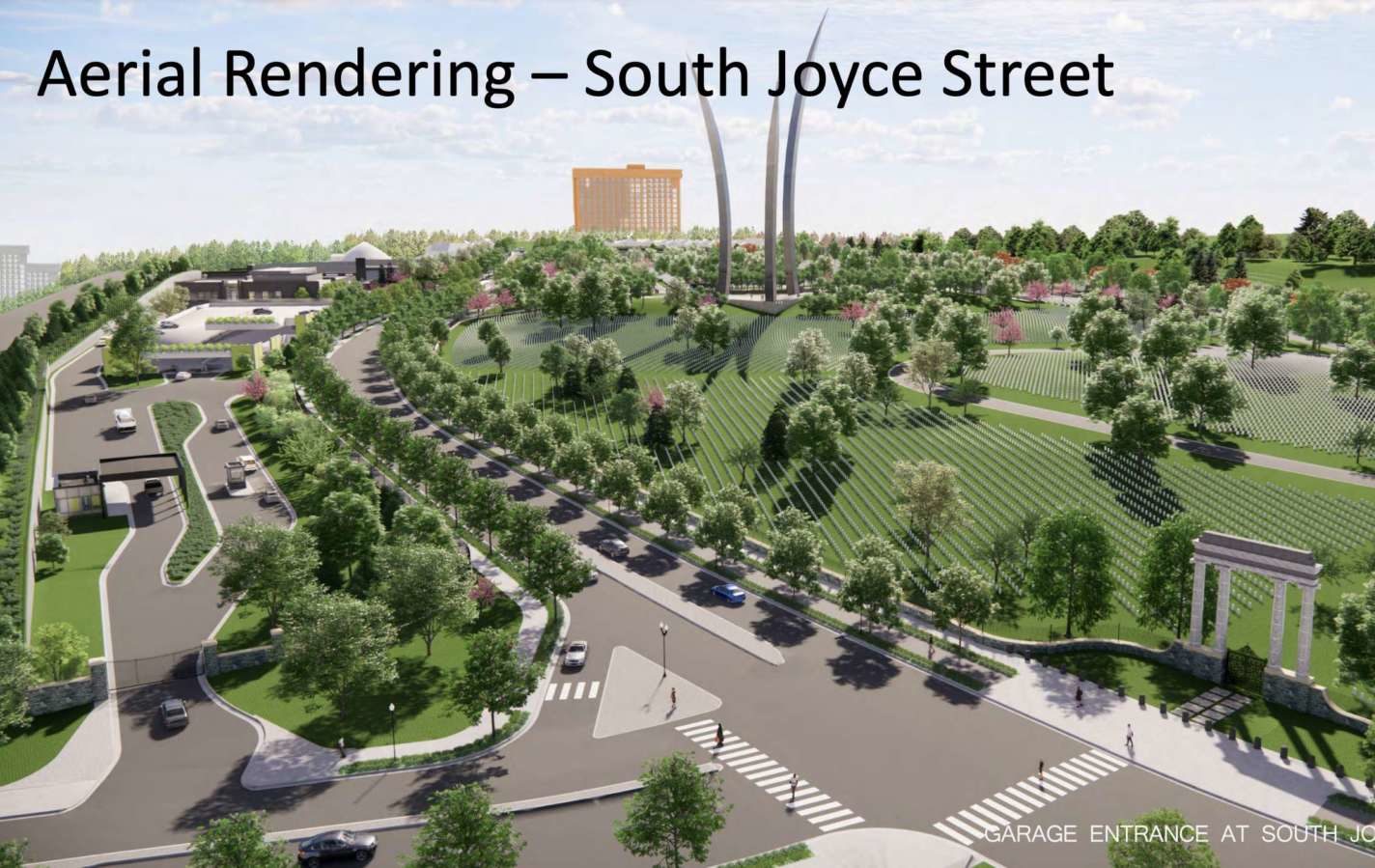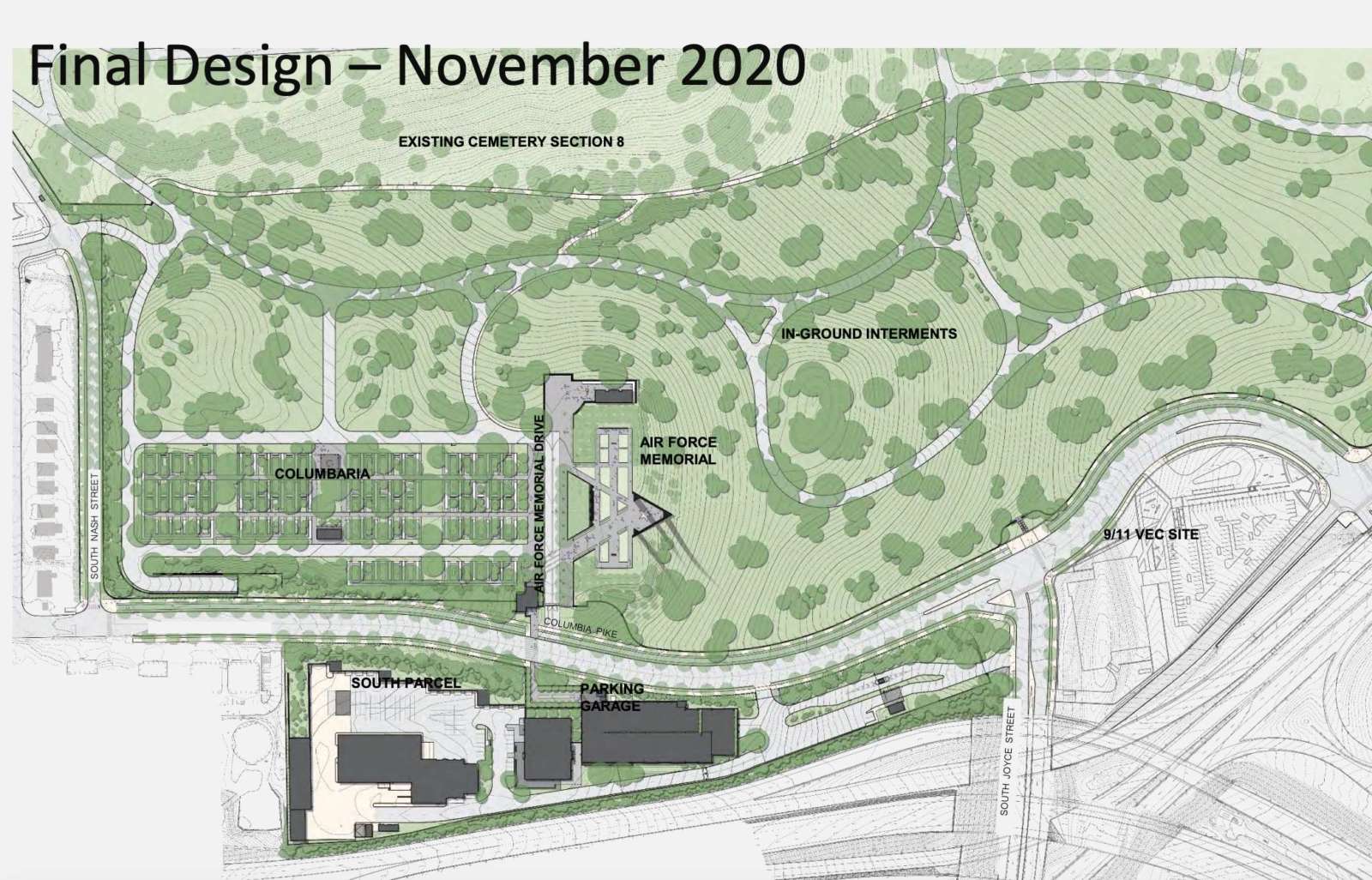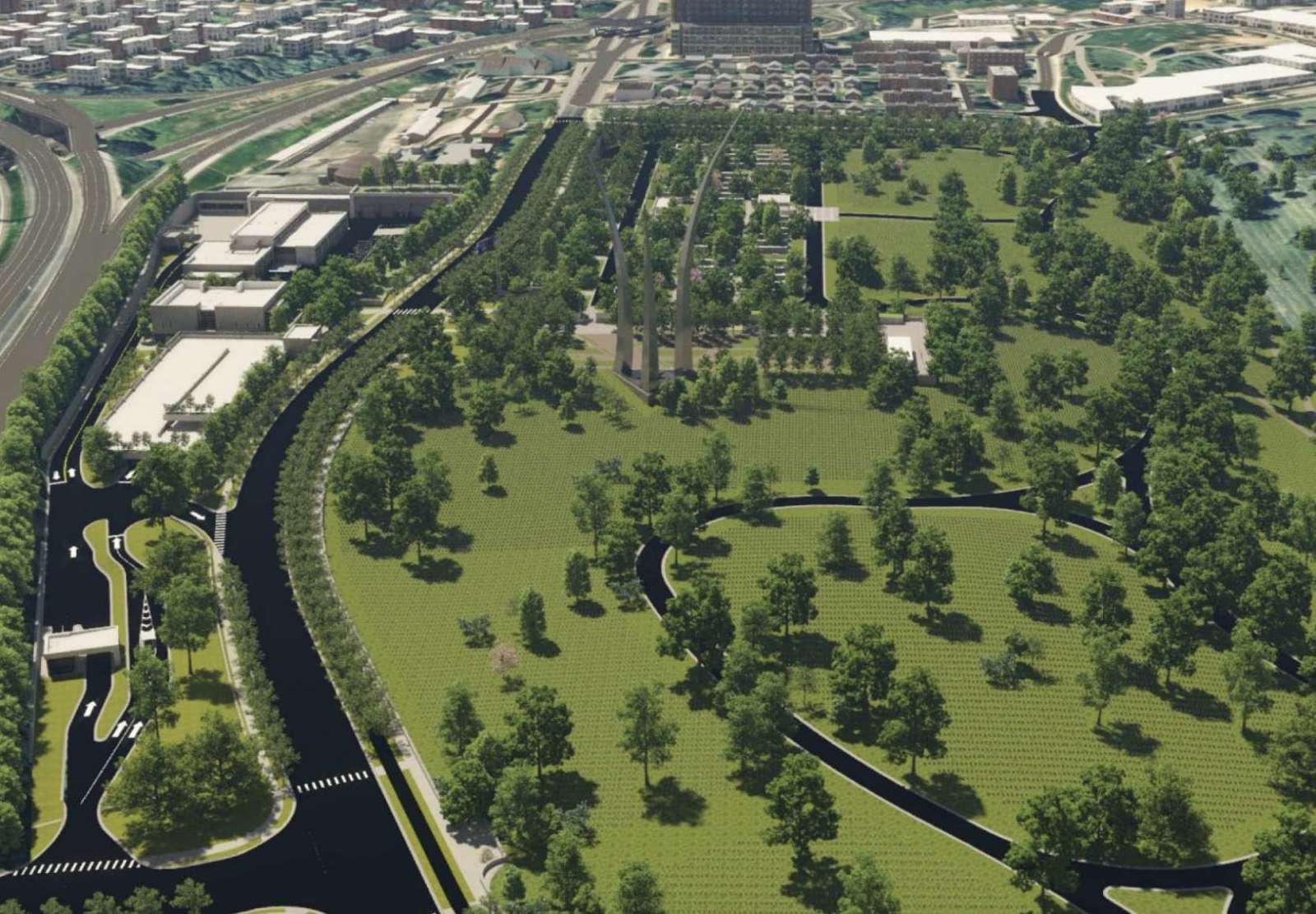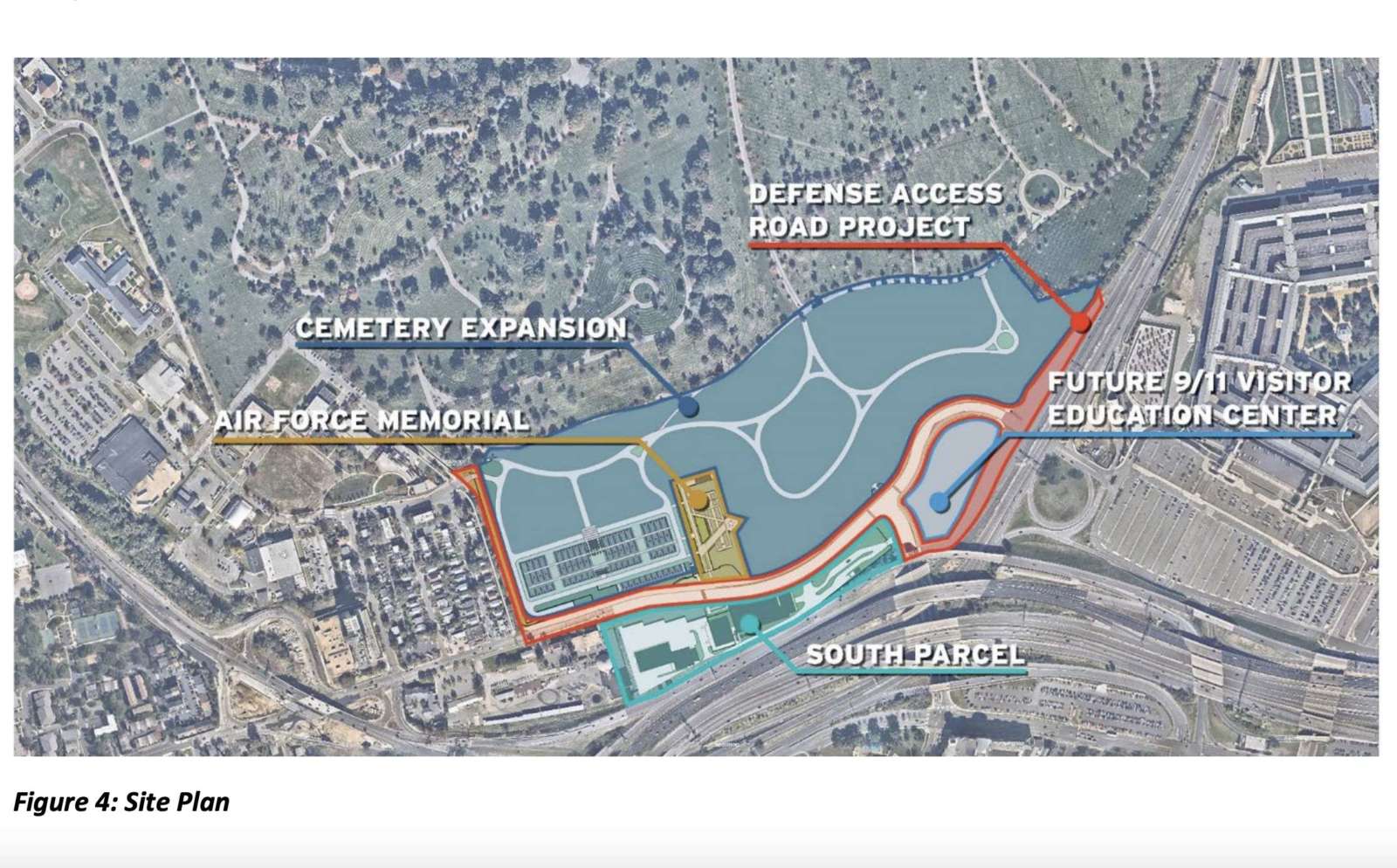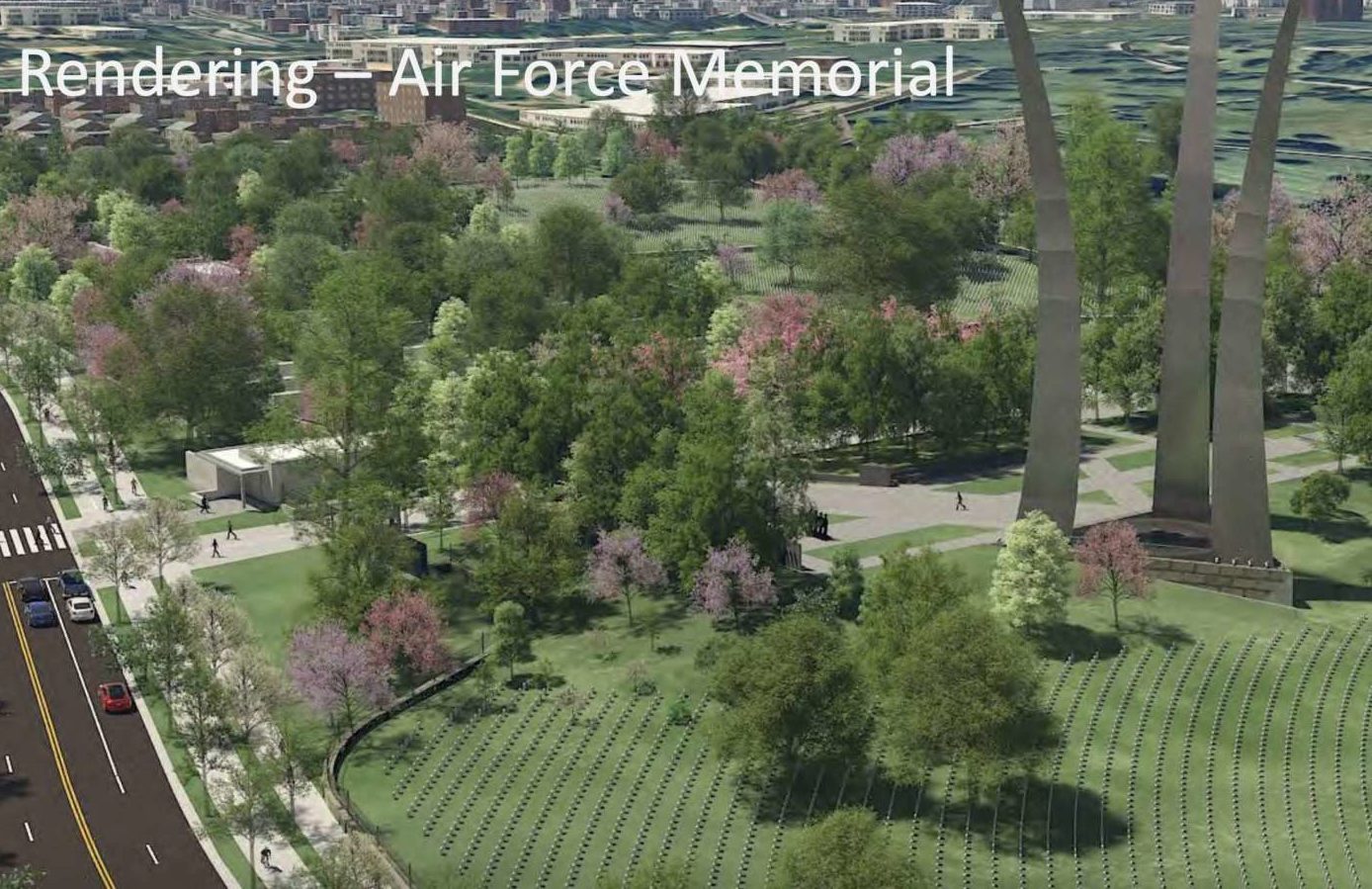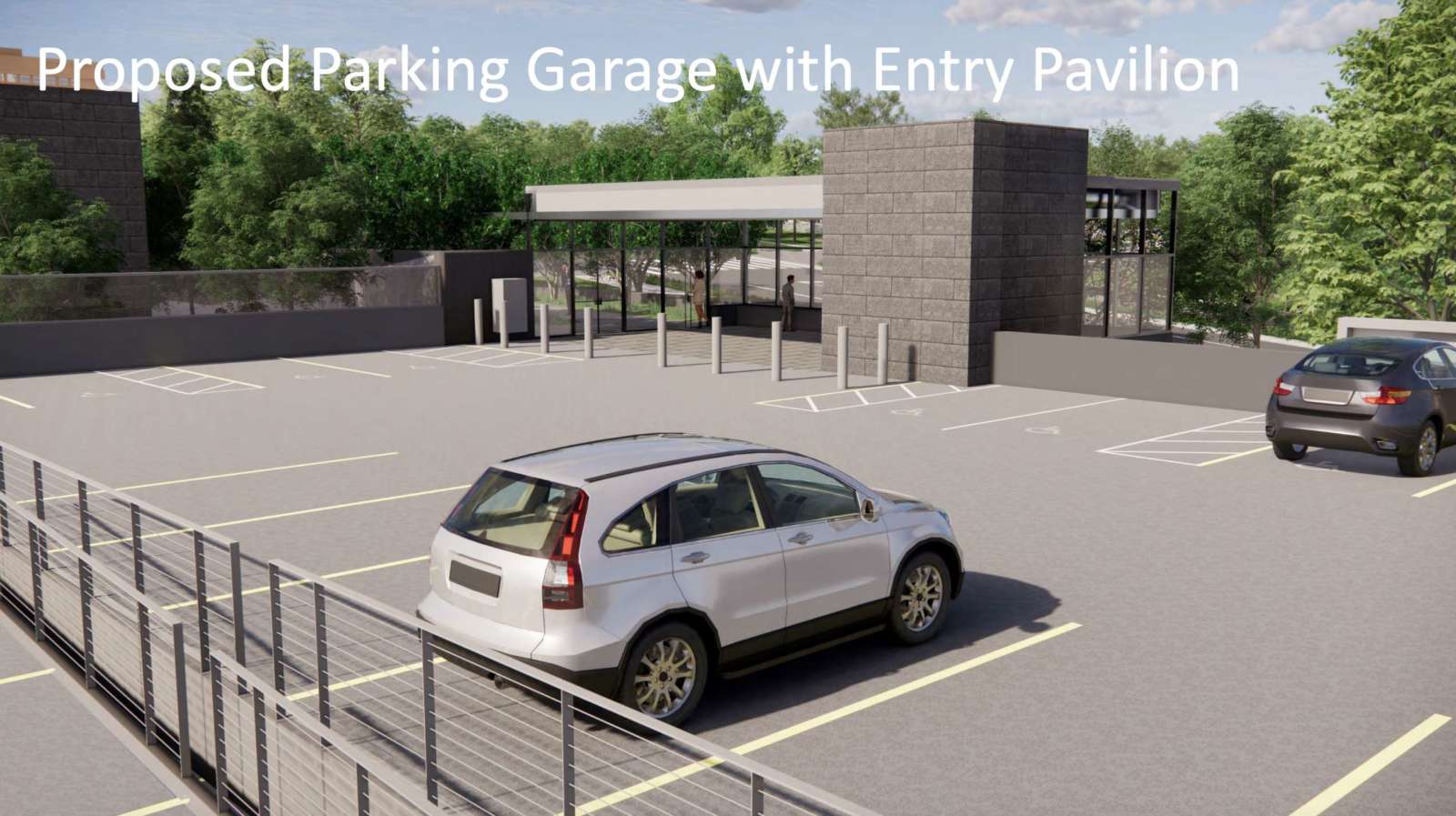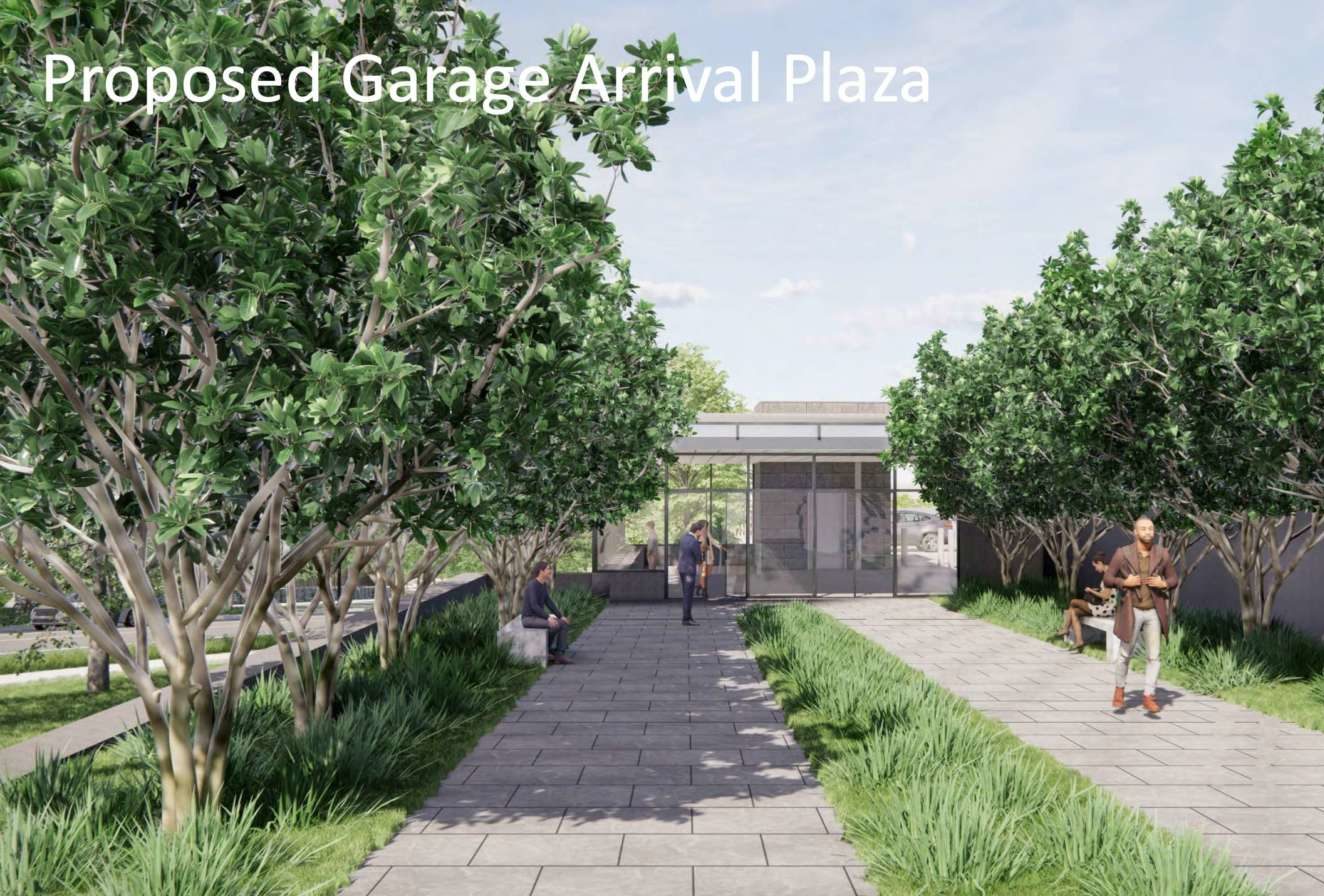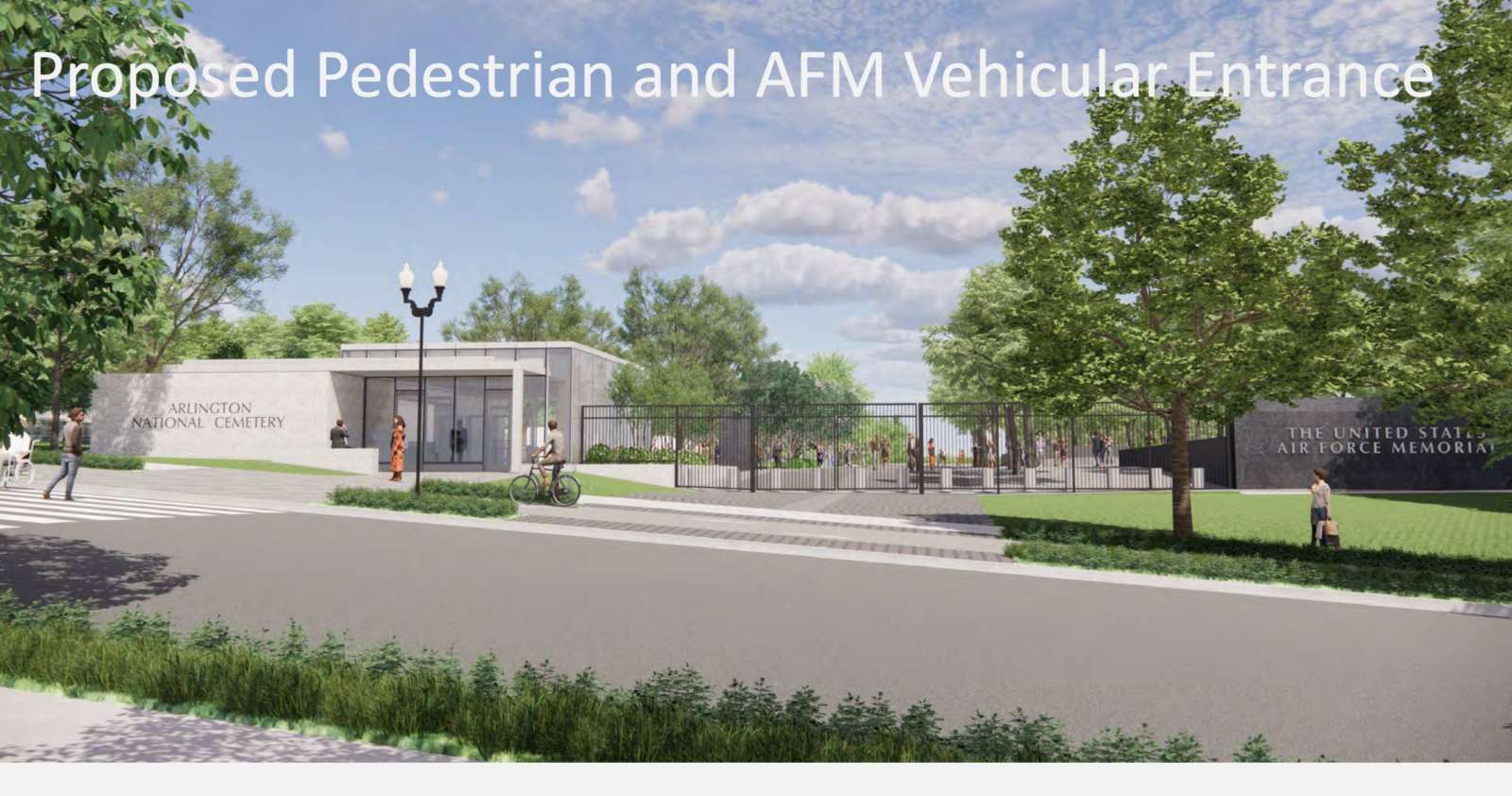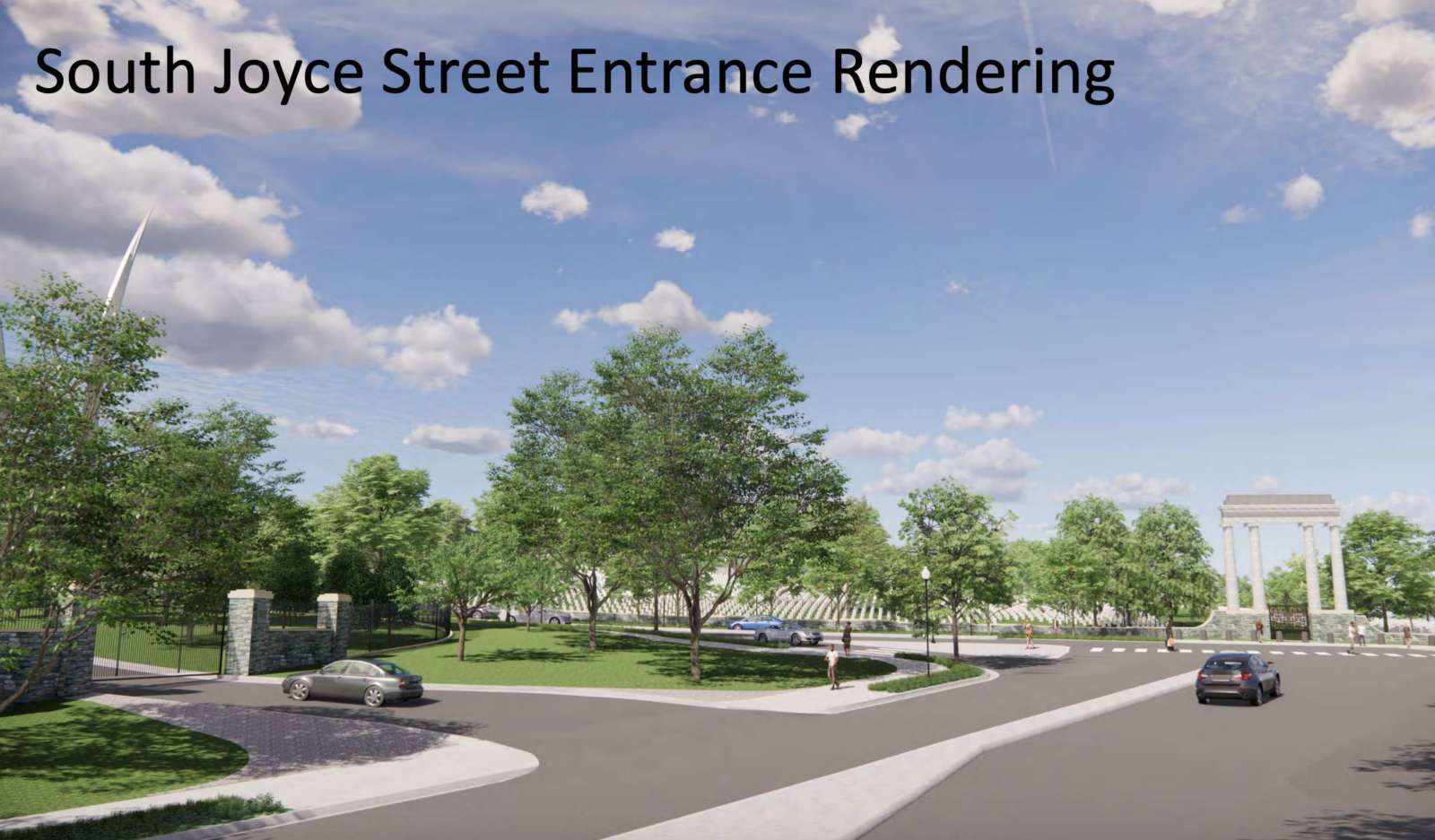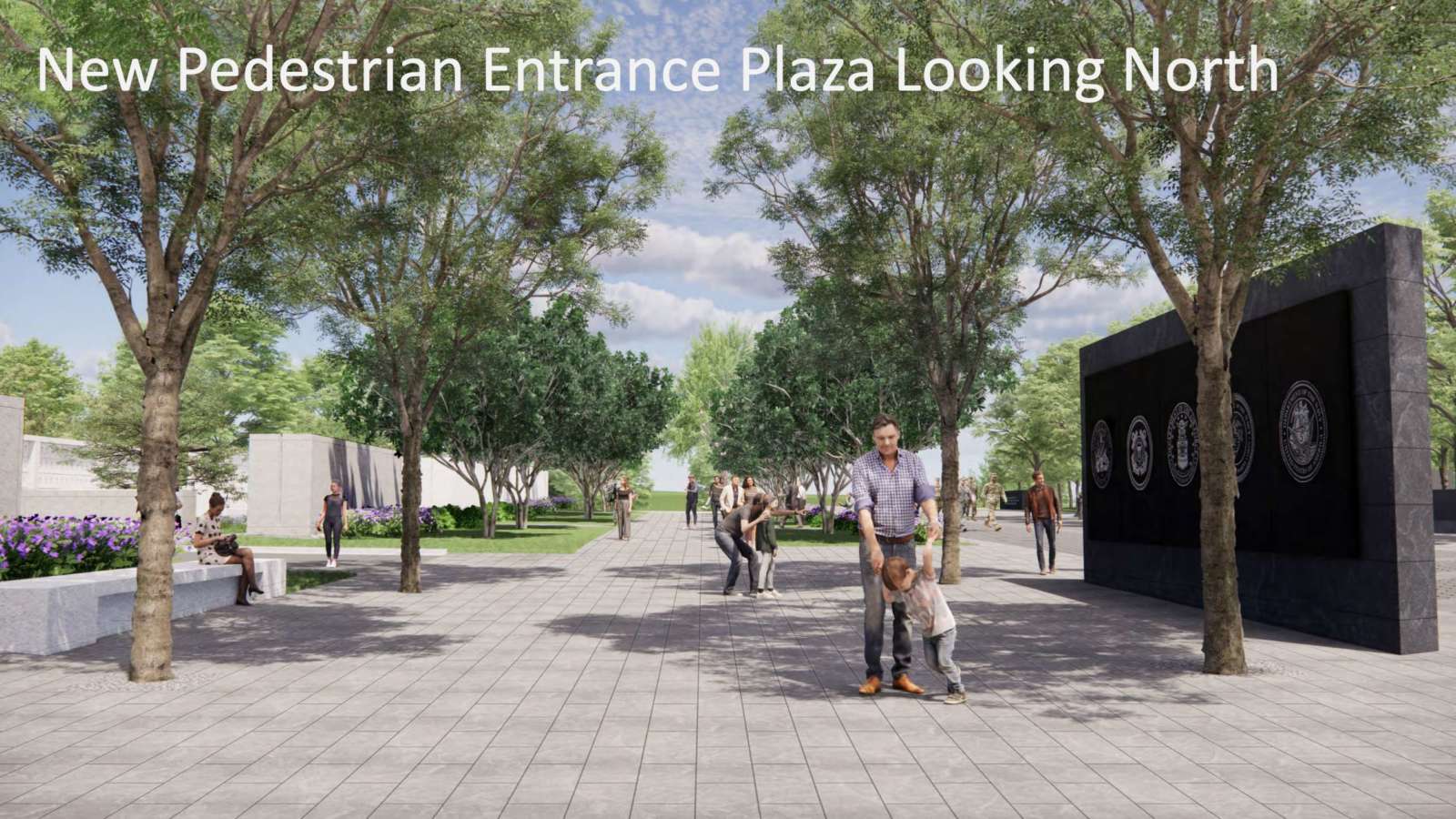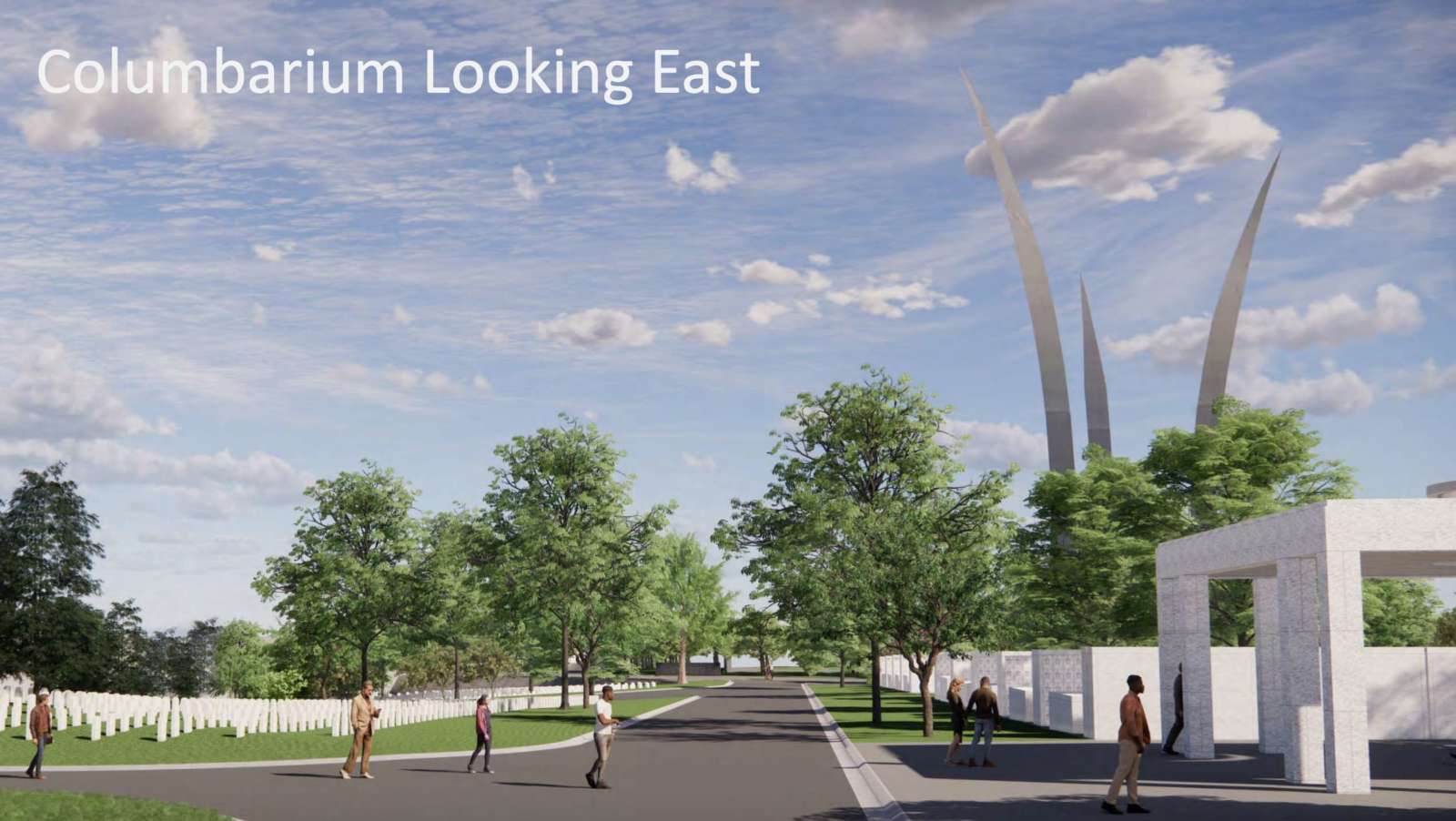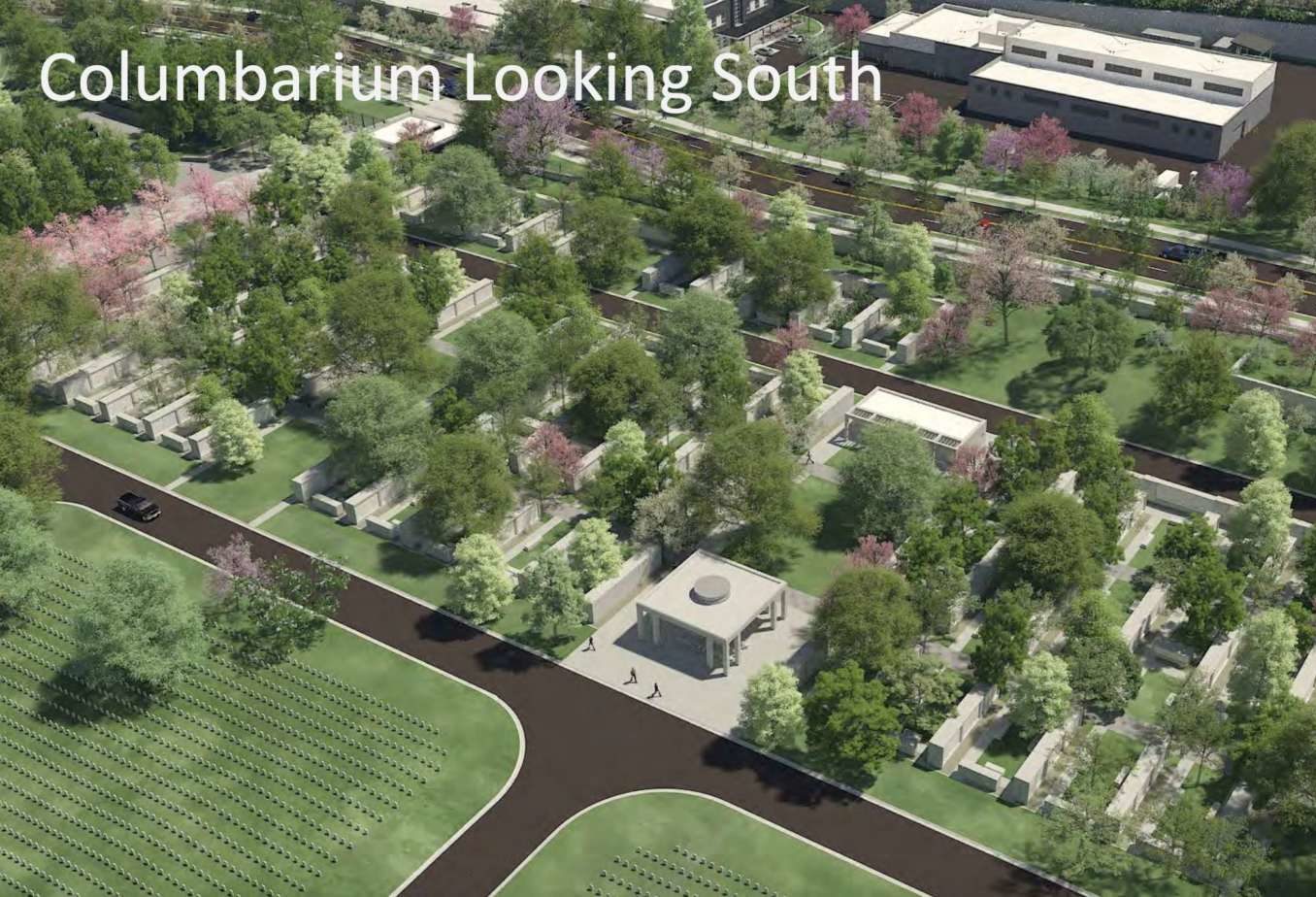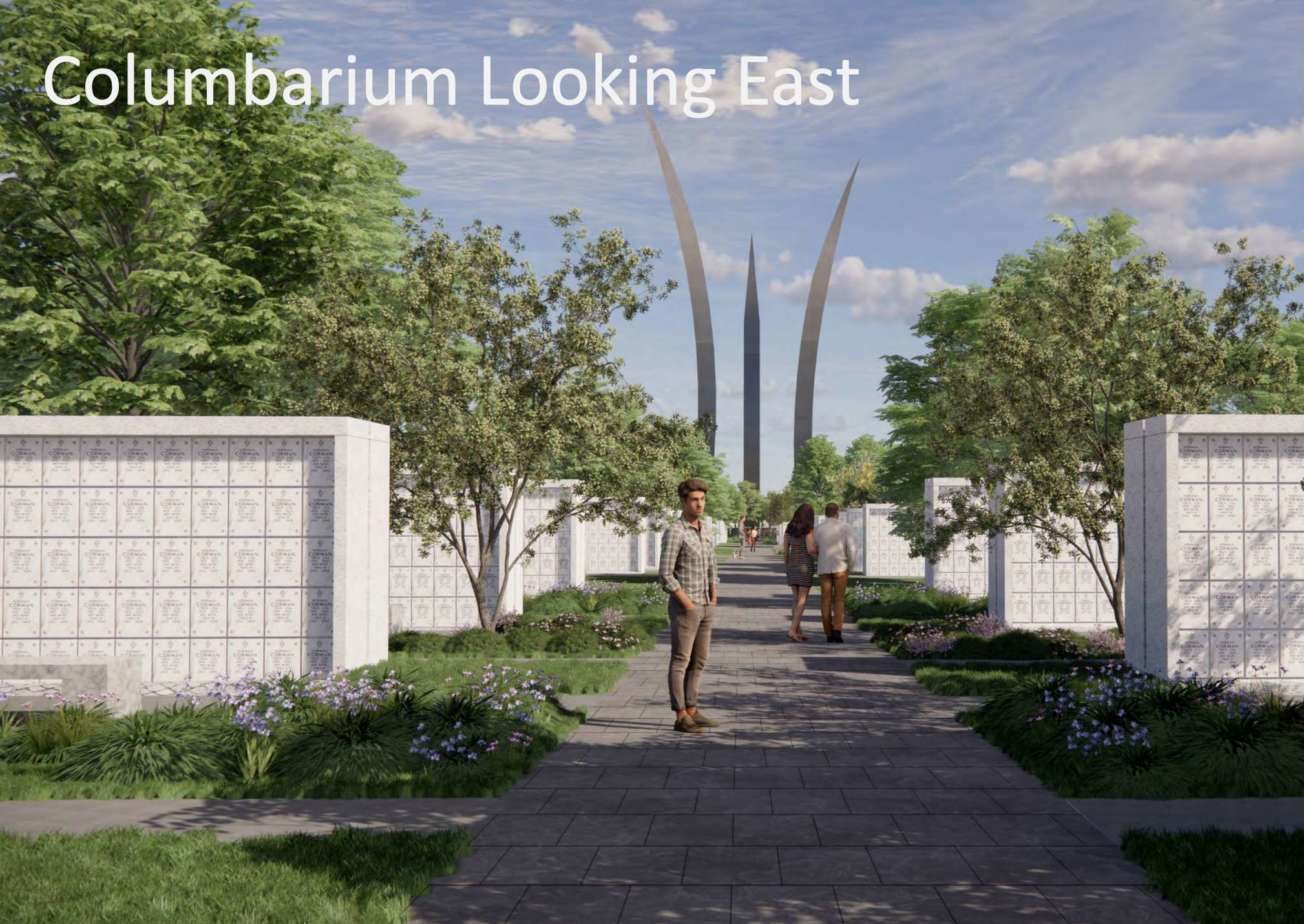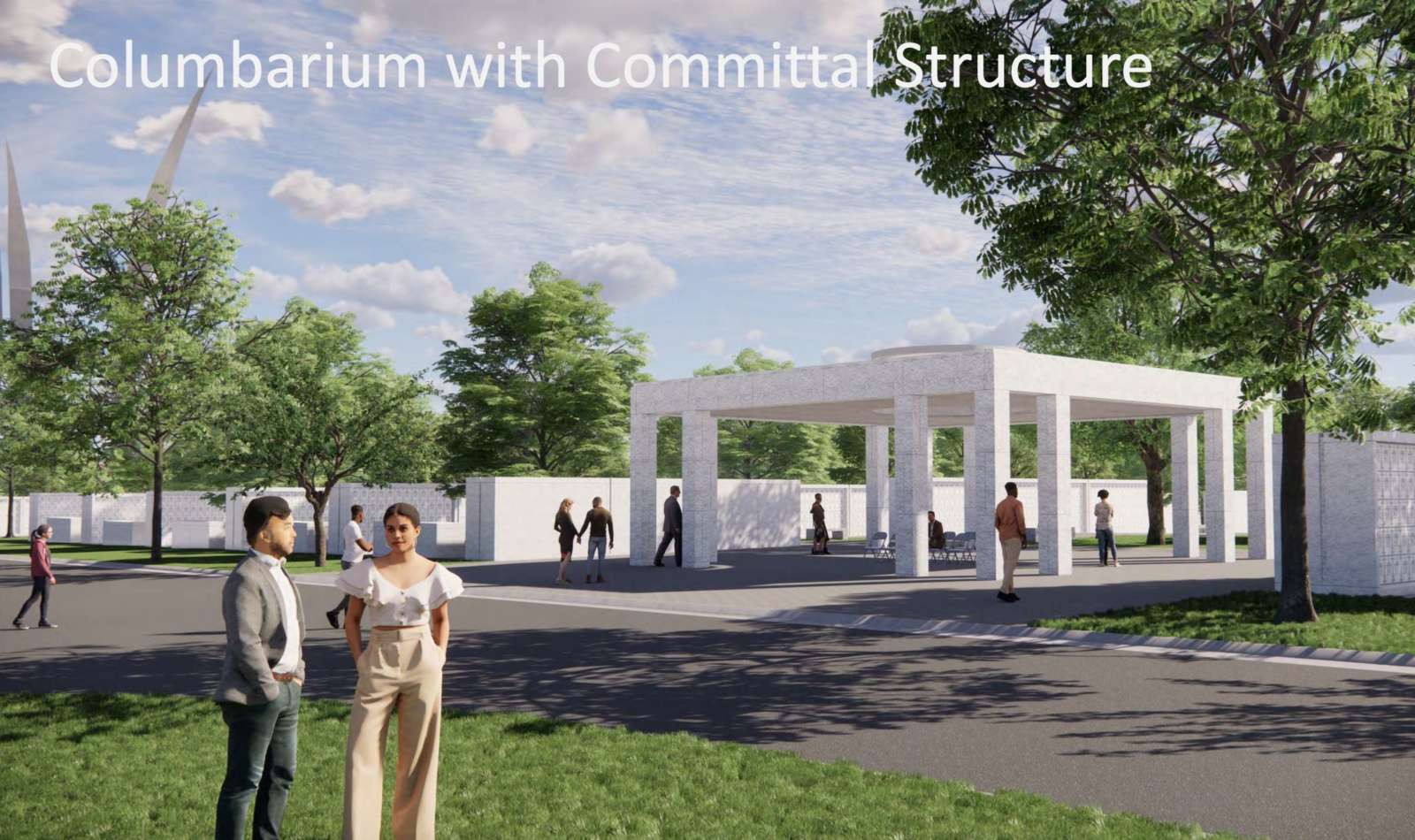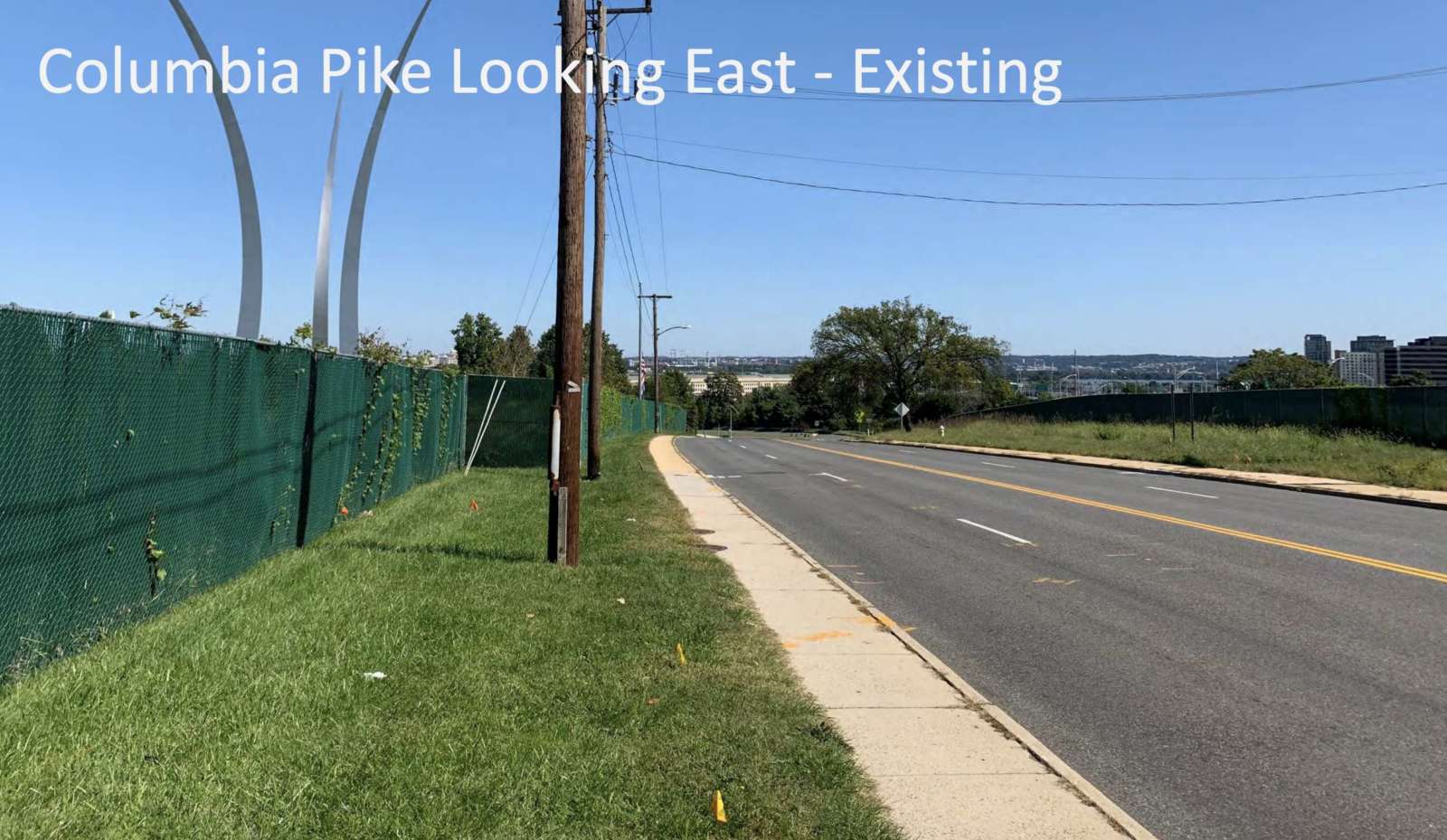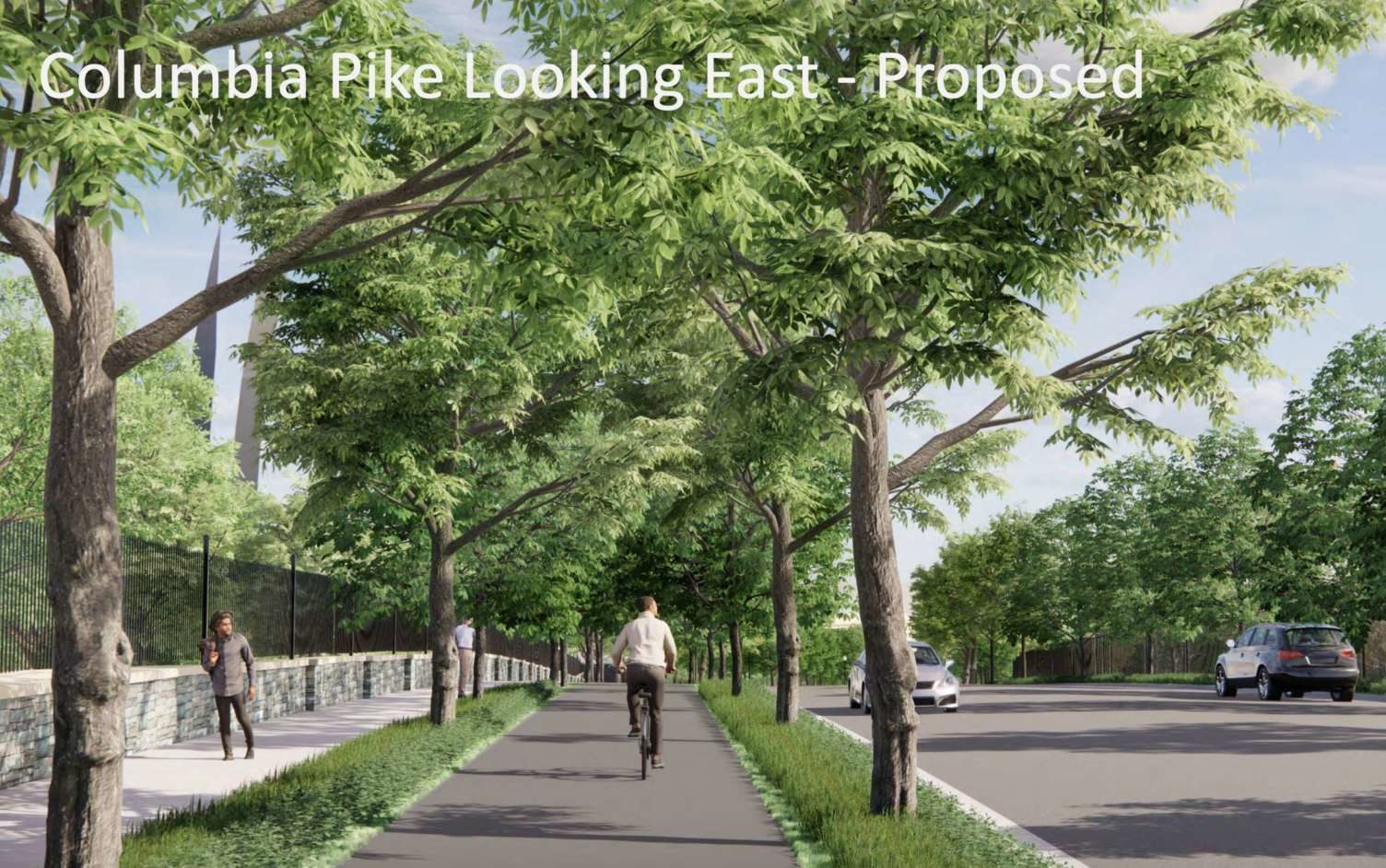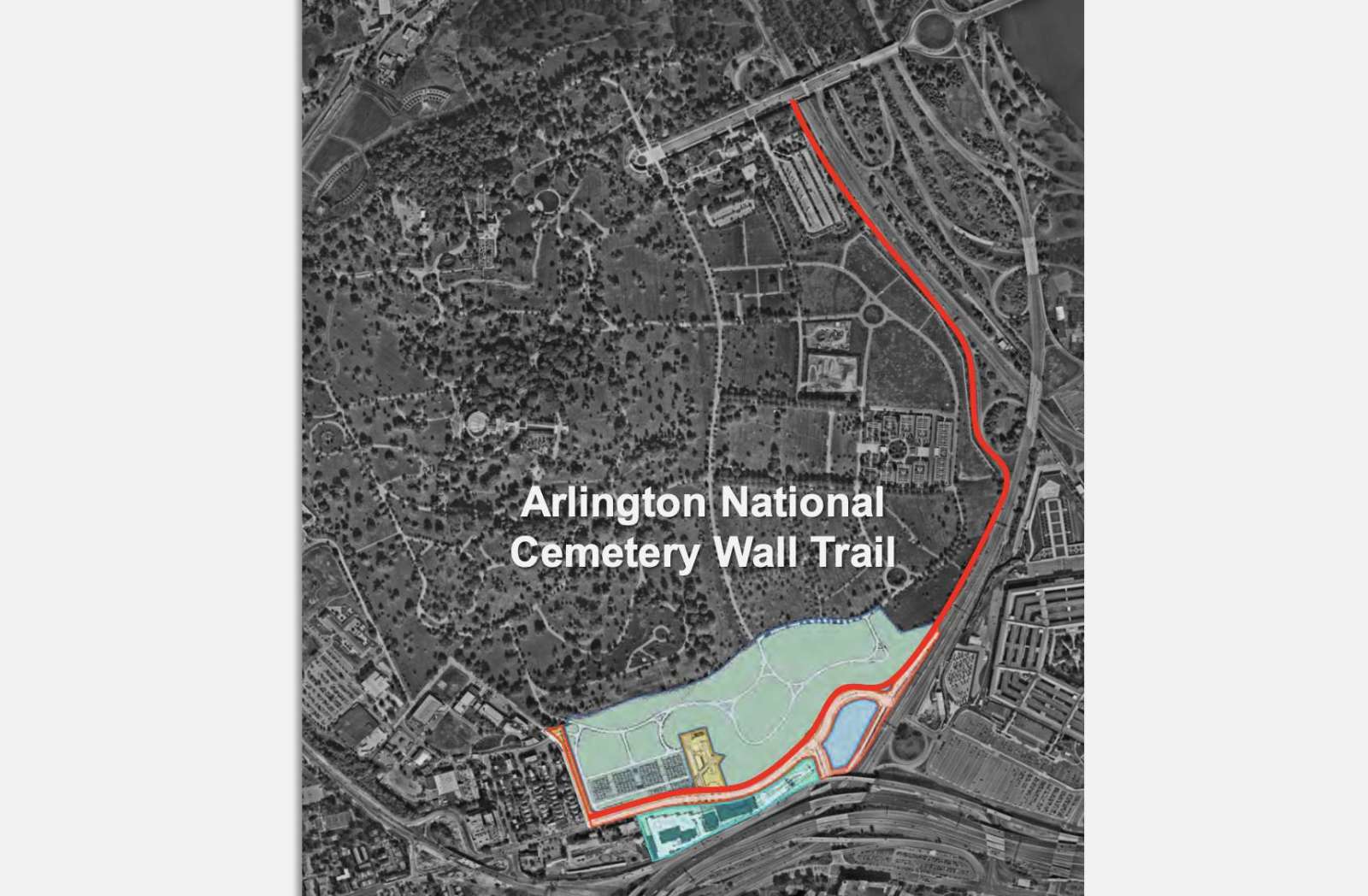A major project to add 70 acres to Arlington National Cemetery while reconfiguring the eastern end of Columbia Pike is inching forward.
The cemetery’s southern expansion project will add about 60,000 burial sites, across 37 acres of new burial plots and an above-ground columbarium, allowing the cemetery to continue military burials through the 2050s. It will also bring the Air Force Memorial within the cemetery grounds, and add a parking garage across Columbia Pike.
The federal government acquired county-owned land for the expansion via an eminent domain suit this summer. In exchange, the feds are paying for the reconfiguration of Columbia Pike and the creation of a new S. Nash Street in the tiny Foxcroft Heights neighborhood adjacent to the Air Force Memorial — a $60 million project.
“The expansion project will benefit Arlington County and its residents by, among other things, burying overhead power lines and incorporating the Air Force Memorial and surrounding vacant land into Arlington National Cemetery,” the federal government said in June. “The project will transform Columbia Pike from South Oak Street to Washington Boulevard by re-aligning and widening it. The project includes streetscape zones with trees on both sides of Columbia Pike, adding a new dedicated bike path, and widening pedestrian walkways.”
In all, the cemetery expansion and the road project are expected to cost $420 million, most of which has already been appropriated by Congress.
Separately, the federal government is also planning a visitor center for the 9/11 Memorial at the Pentagon, across from the expanded portion of the cemetery closer to the Pentagon, as well as a new trail along the cemetery border from Foxcroft Heights to Memorial Drive.
The National Capital Planning Commission discussed the cemetery expansion plan at a review meeting last week. A presentation that preceded the discussion included a number of renderings of the project, as seen above.
The commission largely approved of the plan, but asked the Army to “submit a revised design for the Air Force Memorial vehicular entrance gate to address the unwelcoming experience created by the 60-foot line of bollards and fencing.”


